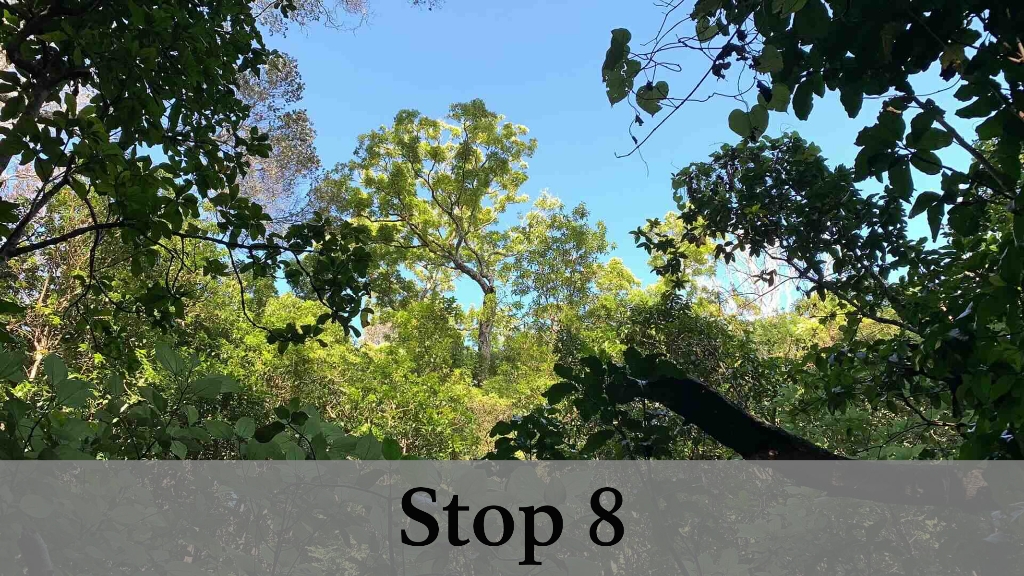
The forest floor of native ferns and herbs is also recovering.
While celebrating the recovery of native trees in Kīpukapuaulu, park managers also rejoice in the successful return of the native understory shrubs, ferns, and herbs. In this 1921 photo of Kīpukapuaulu, only a grassy cattle pasture remains beneath a canopy of grandparent trees. Absent are the young trees and native forest floor plants beneath them. Had those conditions continued, Kīpukapuaulu would have looked much different today. Today’s understory is flourishing. The recovery of the forest floor plants has not only increased the diversity of native plants here, but also restored plants of cultural significance, like the endemic ʻalaʻalawainui (Peperomia cookiana), the indigenous palapalai fern (Microlepia strigosa), and the common kupukupu swordfern (Nephrolepis exaltata and cordifolia). Without question, much of Hawaiʻi’s extraordinary plant life plays an essential role in the Hawaiian culture. ʻAlaʻalawainui is widely used by native Hawaiians for its medicinal value. Palapalai and kupukupu are most commonly haku (braided) or hili (plaited) to create lei for hula—lei poʻo (lei worn on the head), lei ʻāʻī (lei worn on the shoulders), and lei kūpeʻe (lei worn as a bracelet around the wrists and ankles). These, and other plants, are meticulously collected and offered as hoʻokupu (spiritual gift) to the goddess Pelehonuamea or placed on the sacred kūʻahu (hula altar) in honor of the goddess Laka—the ʻaumakua to whom hula practitioners pay homage. These now thriving, culturally significant plants are the most common species found in the returning understory of Kīpukapuaulu.Is there something we missed for this itinerary?
Itineraries across USA

Acadia

Arches National Park

Badlands

Big Bend

Biscayne

Black Canyon Of The Gunnison

Bryce Canyon

Canyonlands

Capitol Reef

Carlsbad Caverns

Channel Islands

Congaree

Crater Lake

Cuyahoga Valley

Death Valley

Dry Tortugas

Everglades

Gateway Arch

Glacier

Grand Canyon

Grand Teton

Great Basin

Great Smoky Mountains

Guadalupe Mountains

Haleakalā

Hawaiʻi Volcanoes

Hot Springs

Indiana Dunes

Isle Royale

Joshua Tree

Kenai Fjords

Kobuk Valley

Lassen Volcanic

Mammoth Cave

Mesa Verde

Mount Rainier

North Cascades

Olympic

Petrified Forest

Pinnacles

Rocky Mountain

Saguaro

Shenandoah

Theodore Roosevelt

Virgin Islands

Voyageurs

White Sands

Wind Cave

Yellowstone

Yosemite

Zion